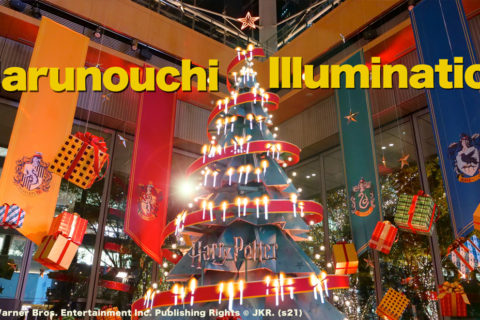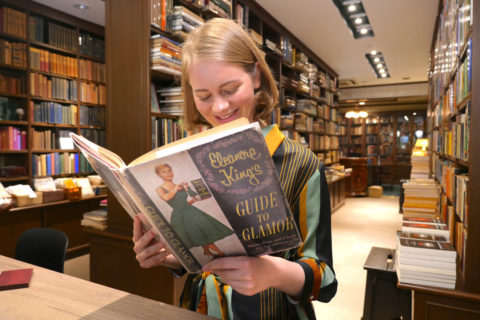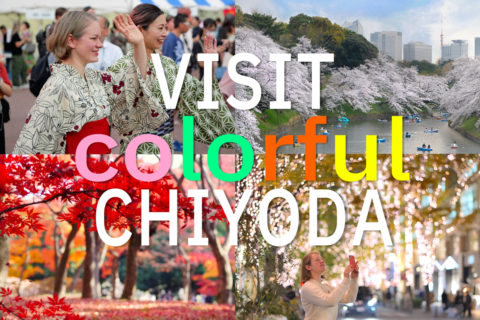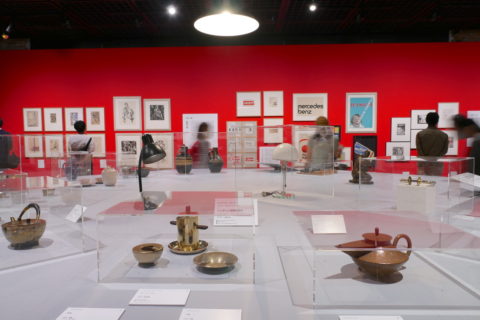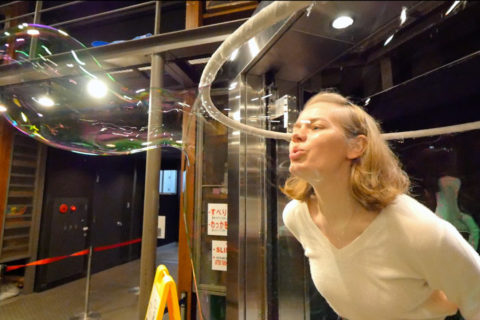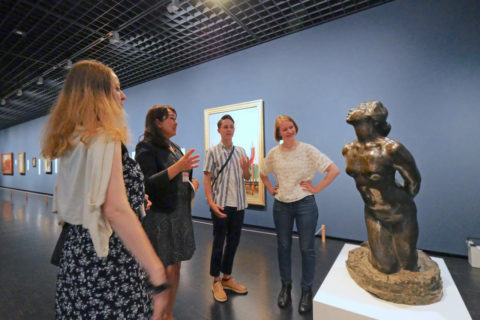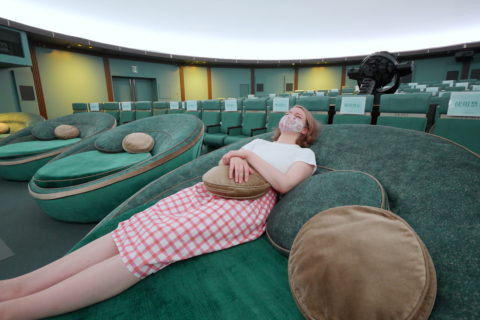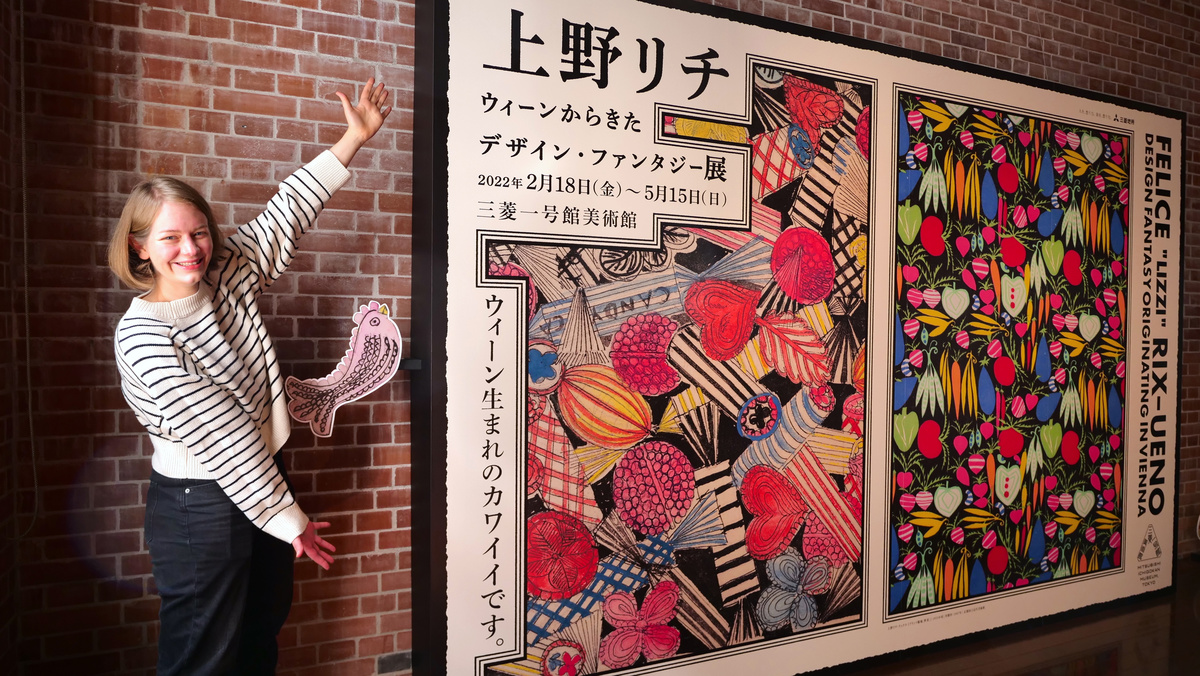
The ongoing exhibition “Felice “Lizzi” Rix-Ueno: Design Fantasy Originating in Vienna” held at the Mitsubishi Ichigokan Museum,Tokyo, is a must-see. About 100 years ago, a female designer came to Japan from Vienna across the sea. What did she create in Japan and what kind of influence had her surrounding on her? What was her perspective on design? The exhibition shows Lizzi Ueno’s striking textile design and works made with traditional Japanese techniques!

Felice “Lizzi” Rix-Ueno (1893-1967) grew up in Vienna in the early 20th century, when the art world was shaken by the advent of industrial art, that is, product design. She studied design at the Wiener Werkstätte. Later she met and married Isaburo Ueno, a Japanese architect who worked at the architectural office of Lizzi’s teacher Josef Hoffmann, and moved to Kyoto, Japan in 1926.
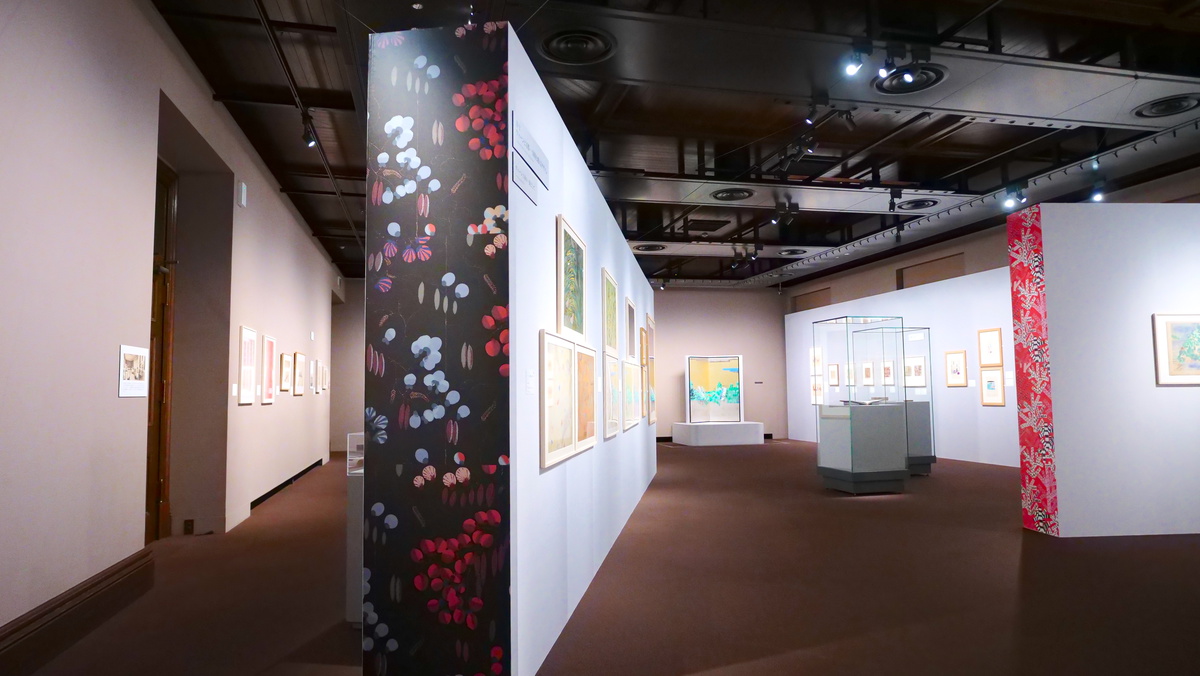
The exhibition introduces the works of the Wiener Werkstätte (Vienna Institute of Crafts), where she studied design, the influence of “Japonism” that was popular in Europe at that time, and many works that Rix Ueno has created since she came to Japan.
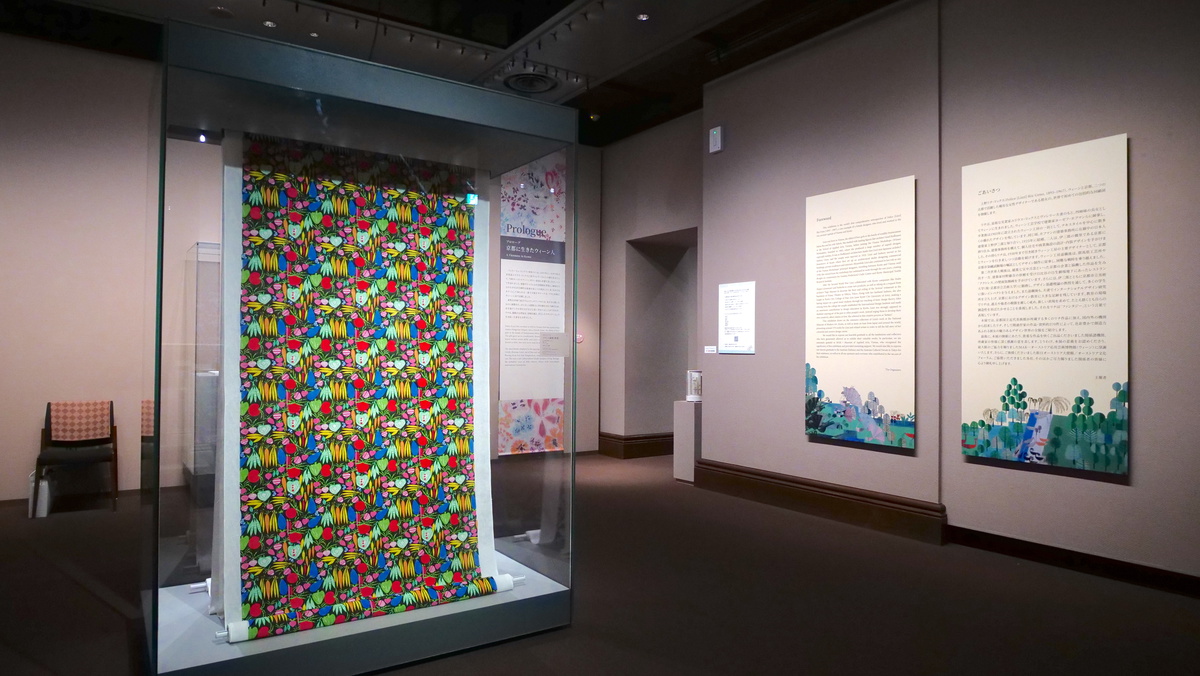


Unlike the founders of the Wiener Werkstätte, who specialize in linear design, Lizzi’s design is characterized by organic and soft curves, fresh colors, and unique and free combinations with often nature as a motif.
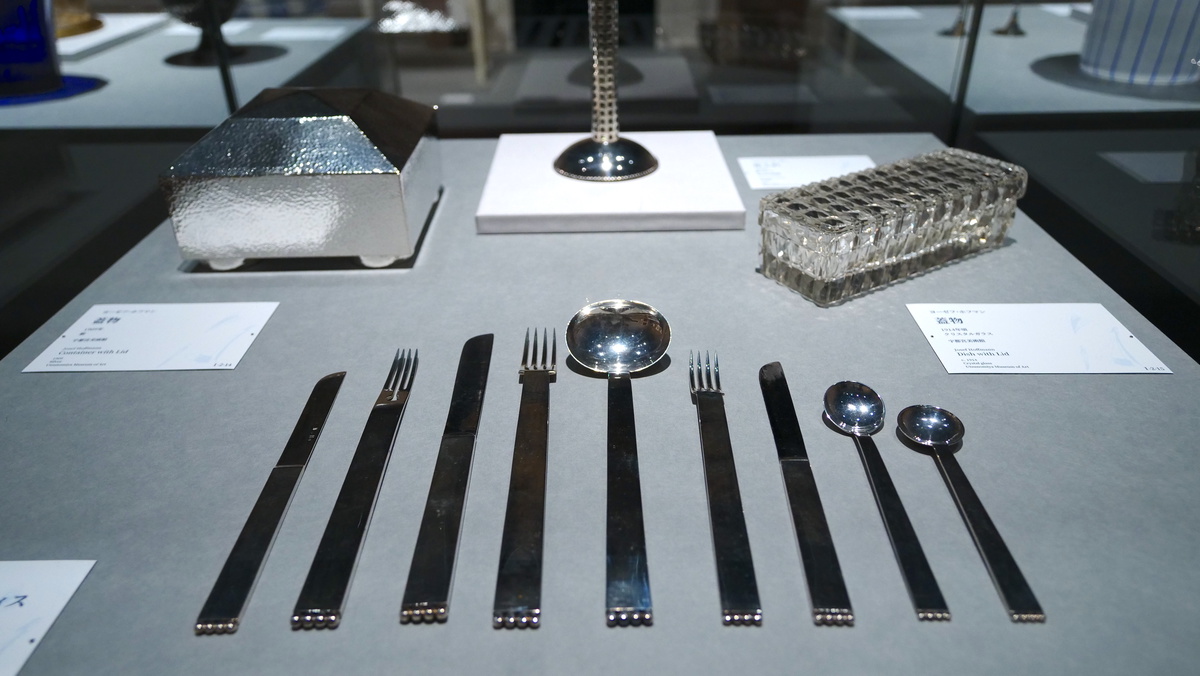

Content
What kind of “Fantasie” did Lizzi Ueno aim for?
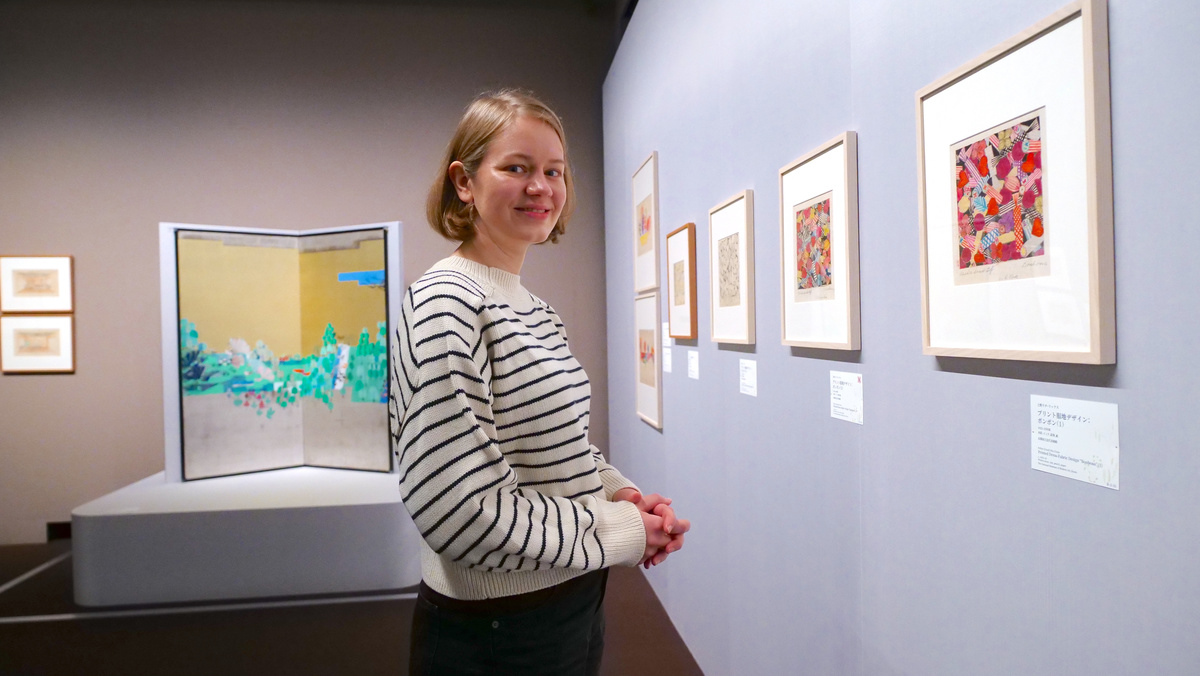
Lizzi says that “Fantasie” is important for design. The German word “Fantasie” means “imagination” as well as “fantasy”. It is said that Lizzi’s “Fantasie” meant being unaffected by others and demonstrating your own imagination for achieving originality.
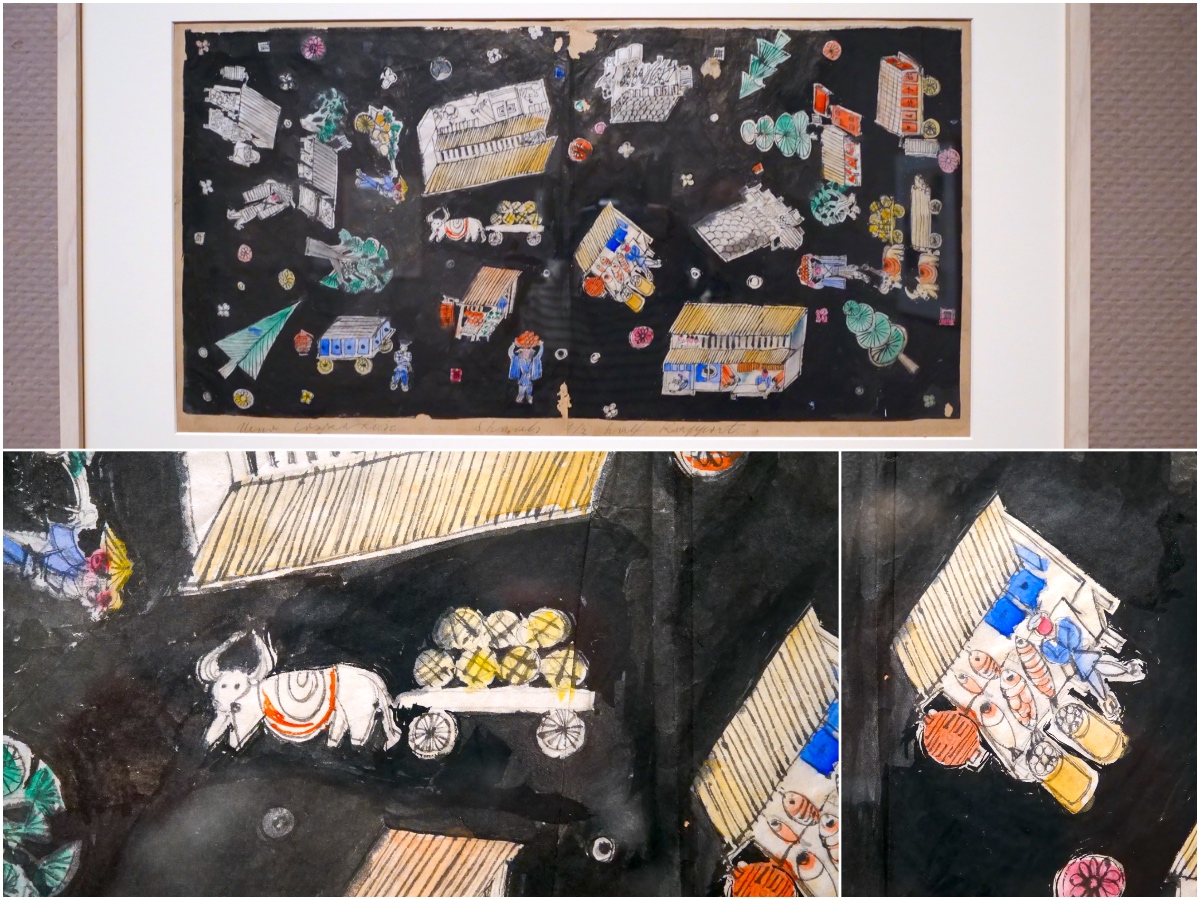
Stores in the backstreets of Kyoto and cow cars float in midair. This is truly a work that contains both meanings of “Fantasie” – fantasy and imagination.
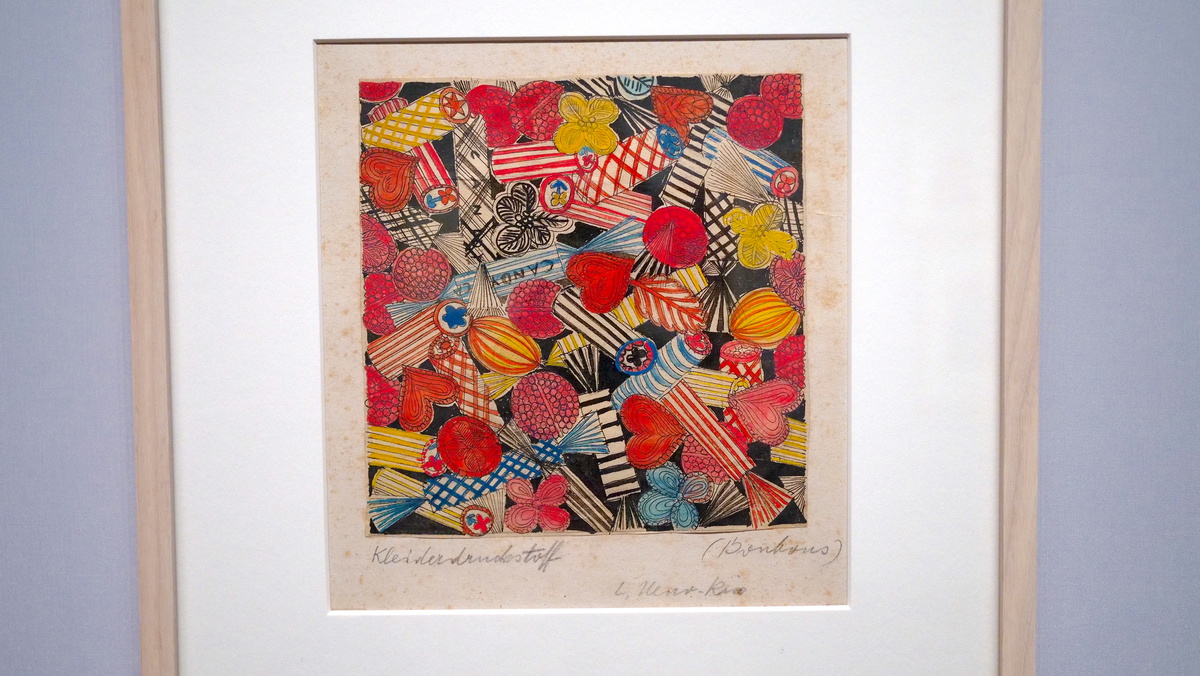
My favorite design for this exhibition. It’s a fabric design for a dress. How much fun would it be to wear a dress with such a fun pattern?

After moving to Japan, Lizzi Ueno designed various traditional Japanese crafts. Kokeshi dolls, embroidery, cloisonne ware, textiles, etc. While “collaborating” with Japanese craftsmen, she created one unique work after another.
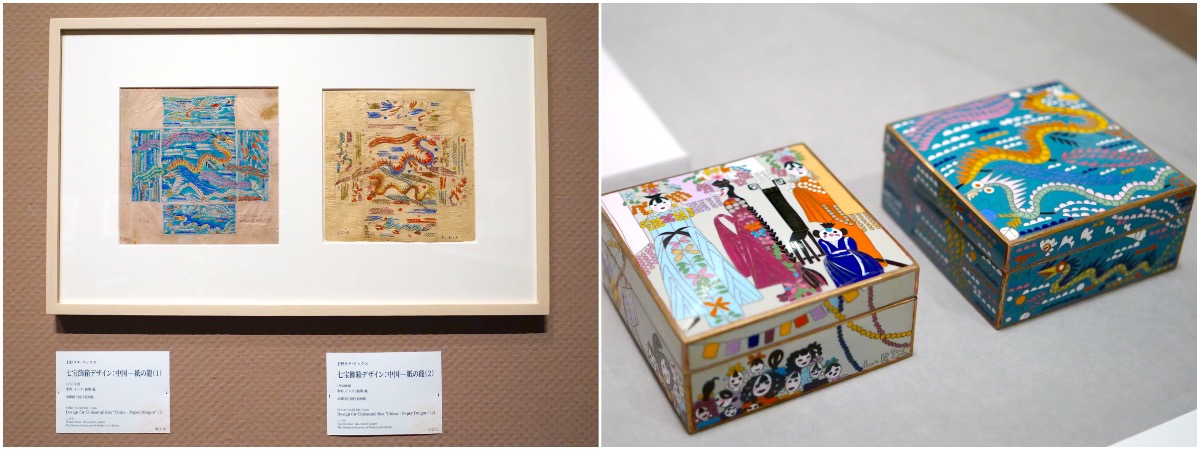
Felice “Lizzi” Rix-Ueno, Cloisonné Box “Chinese Theatre” (left) Cloisonné Box “China – Paper Dragon” (right) c. 1950 [reproduced in 1987], The National Museum of Modern Art, Kyoto;
Lizzi’s design draft and the completed work
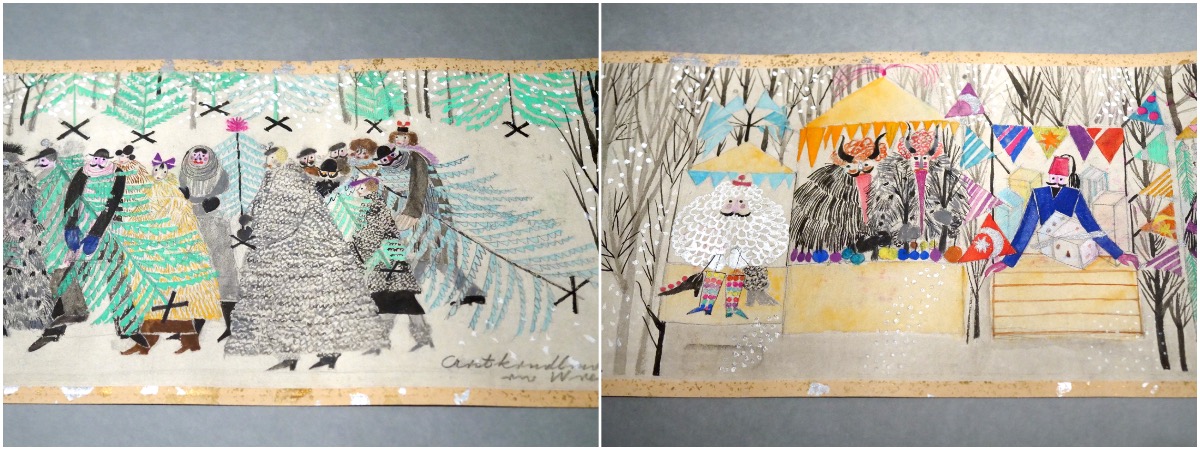
A Christmas cityscape in Vienna drawn on a Japanese scroll. The monsters on the right are the Austrian version of the Japanese “Namahage”, called “Krampus”.
The highlight of the exhibition is the mural painting of the old restaurant “Actress” that was located at the Nissay Theater designed by Lizzi. When the restaurant was renovated in 1995, most of the murals could be preserved at the Kyoto City University of Arts, where Lizzi taught.
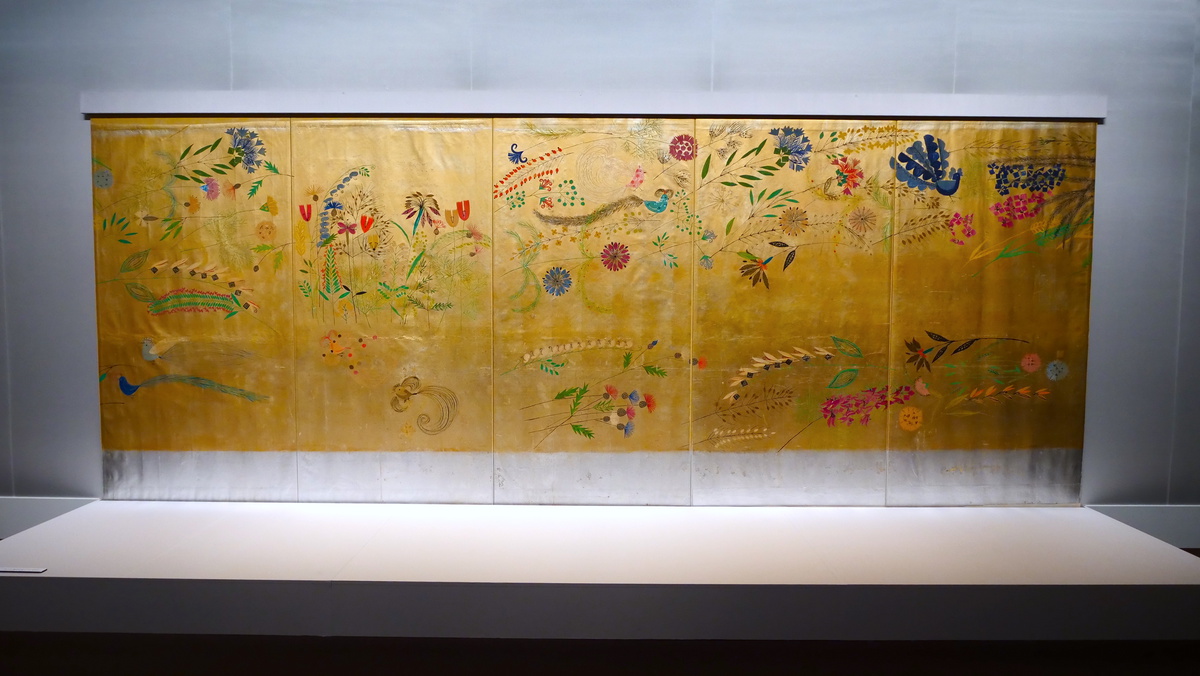
After 1951, Lizzi, who began teaching design to Japanese students, chose some of her best university students to complete the design of the large-scaled restaurant of about 330 square meters. She was directing while her students helped her execute her vision. They used pens to draw on fusuma paper (normally used for Japanese sliding doors) that had aluminum foil glued on. Later, the aluminum foil changed color and looks gold now, but originally it was silver.

Don’t miss the museum shop!

If you like to take a piece of Lizzi’s creations home, don’t miss the museum shop! There are lots of items with her design on them. I especially liked the postcards – too cute!
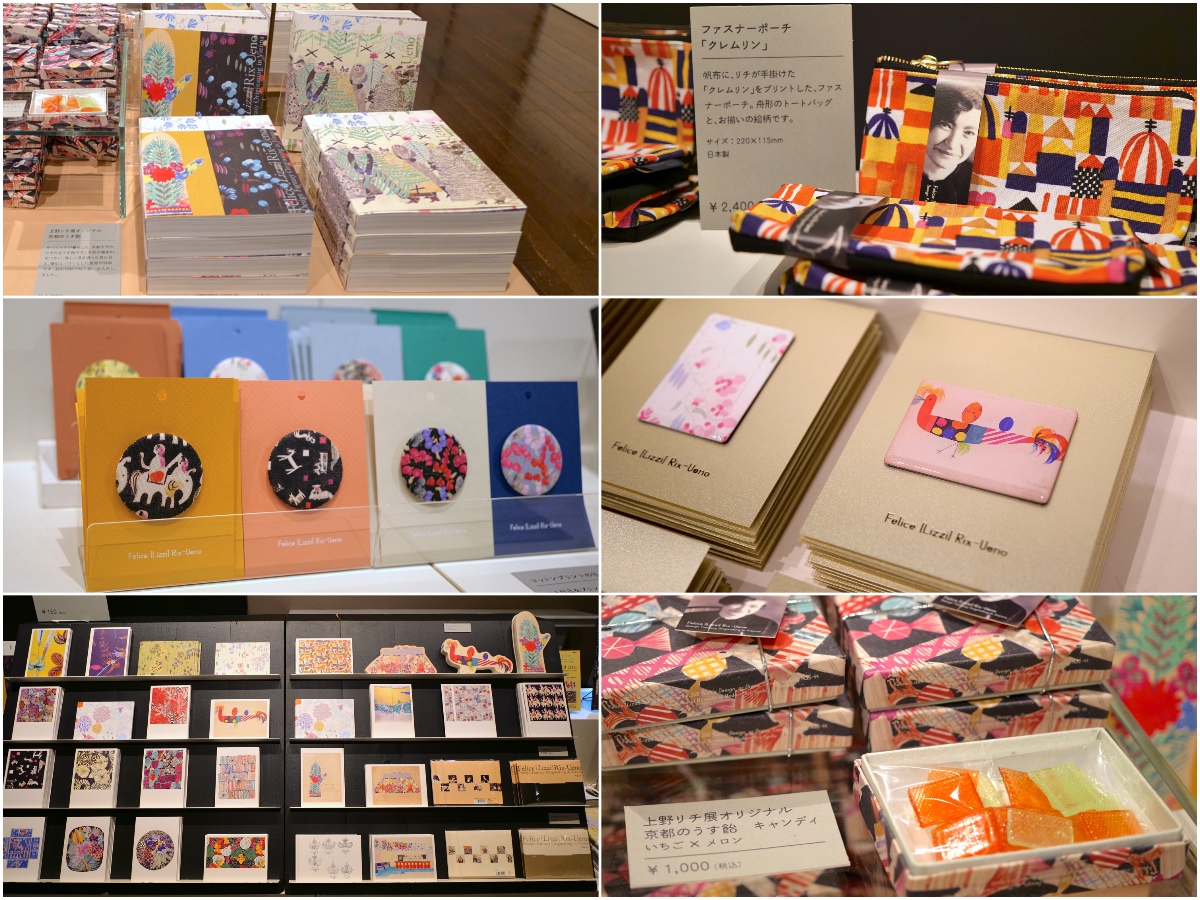
“Café 1894”
At the museum cafe bar “Café 1894”, you can enjoy a tie-up menu that matches the theme of this exhibition.
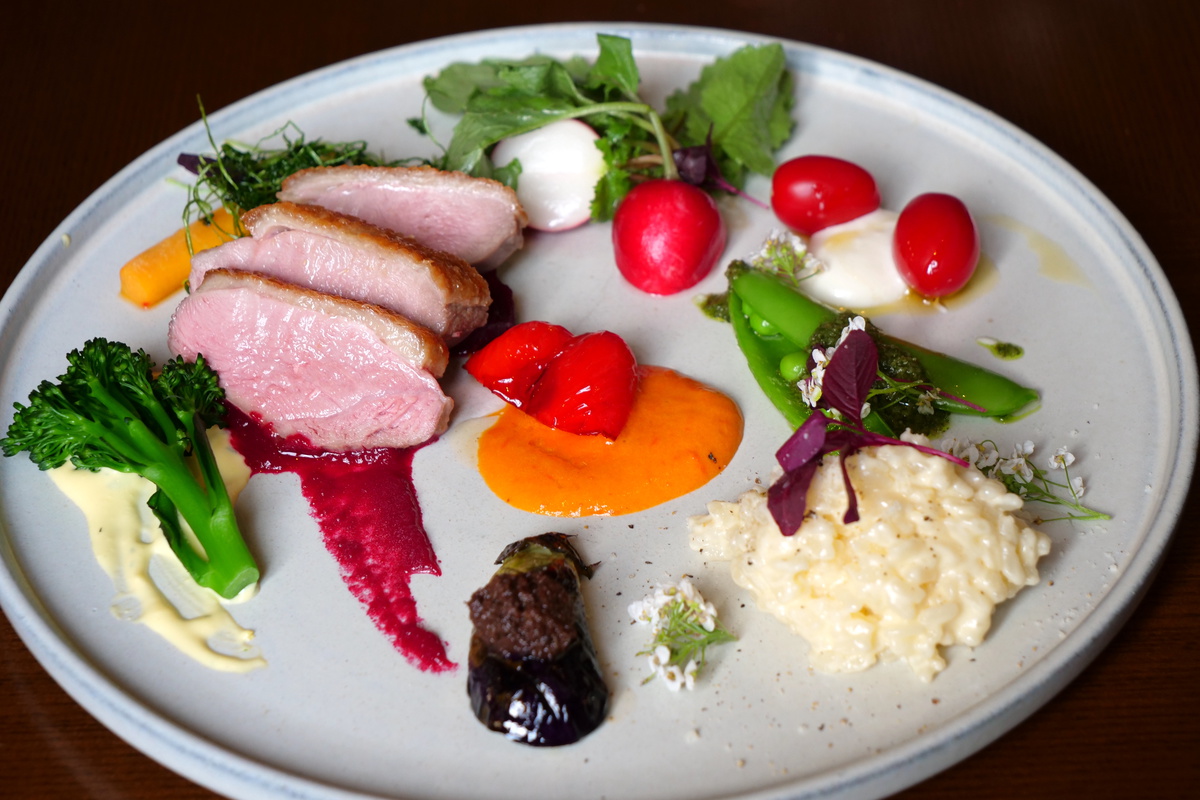
The combination of fresh vegetables and juicy duck meat is the best! All my respect for this “fantasy” created by the cook!


Lastly
Being a foreigner living and working in Japan myself, after seeing the exhibition, I couldn’t help feeling deep admiration for Lizzi.
Lizzi came to Japan 100 years ago, and while using her imagination to establish her unique style, she created various original works using traditional Japanese methods together with Japanese craftsmen.
These days, there isn’t much happy news, but at least for the time spent with Lizzi, I was drawn into her witty world of colorful imagination.
Felice “Lizzi” Rix-Ueno: Design Fantasy Originating in Vienna
https://mimt.jp/lizzi/
Special Website: https://lizzi.exhibit.jp (Japanese, English, Chinese, Korean)
Exhibition Dates: Fri., February 18 to Sun., May 15, 2022
* Exhibition will be changed in between
First Period: Until Sun., October 10 / Second Period: From Sun., April 13
Closed: Mondays, April 12
(apart from )
* However, the museum will be open on Feburary28, March 21 and 28, April 25, May 2 and 9.
Mitsubishi Ichigokan Museum, Tokyo
https://mimt.jp
2-6-2 Marunouchi, Chiyoda-ku, Tokyo
Google Maps: https://goo.gl/maps/TzWZmhJs3XwzaFoQ8
Nearest Stations: Tokyo Station, Yurakucho Station, Nijubashimae Station, Hibiya Station


